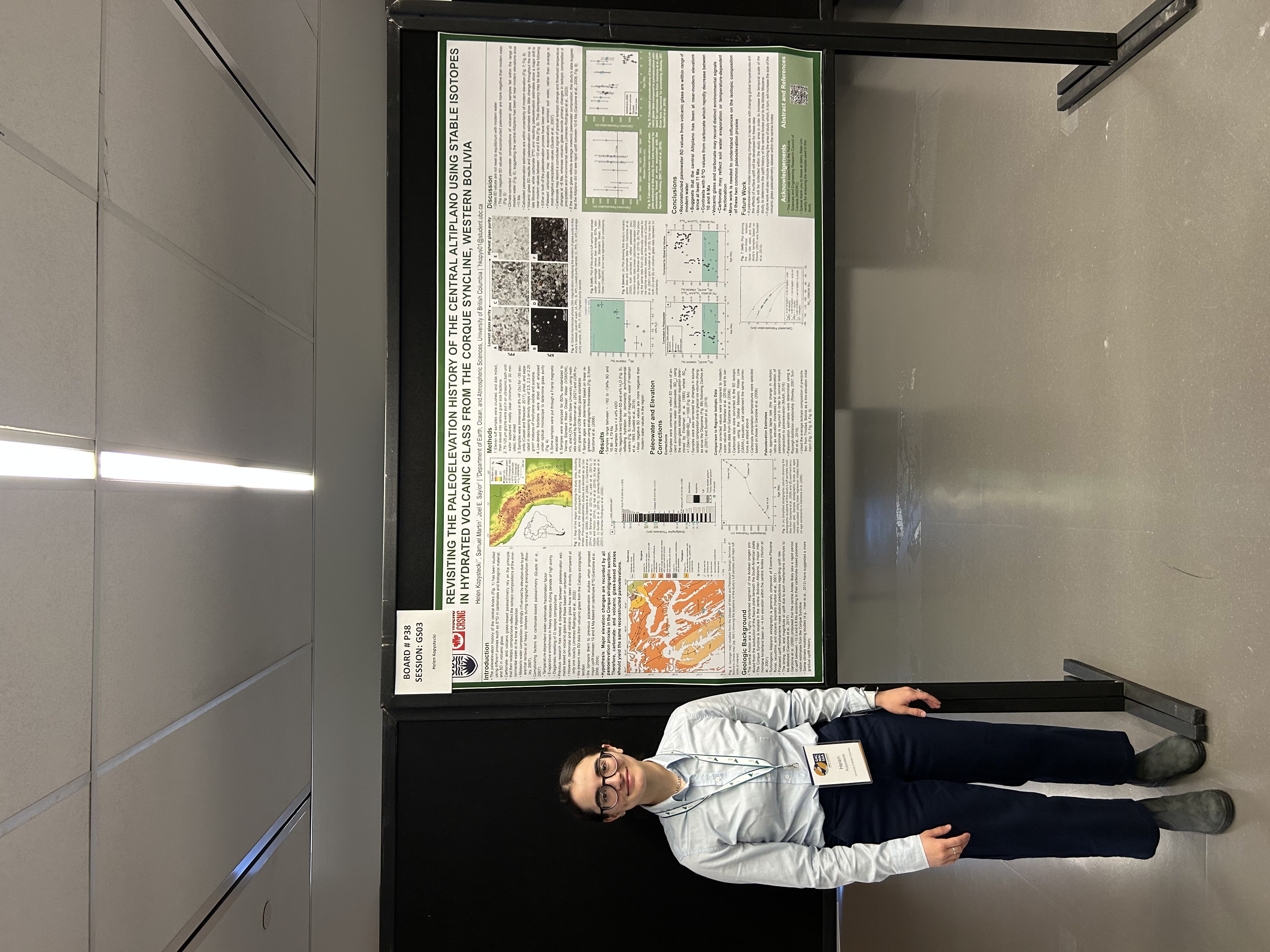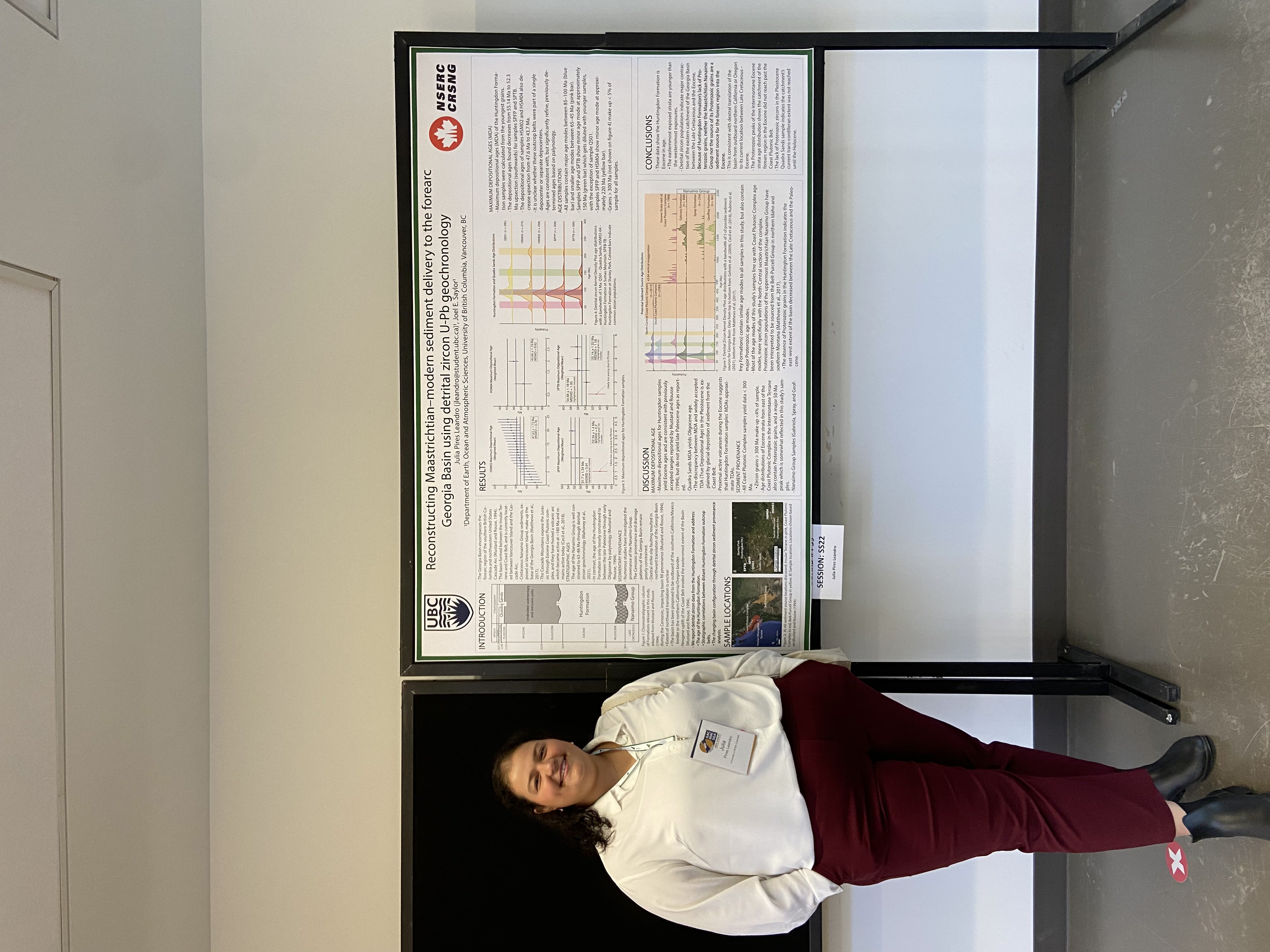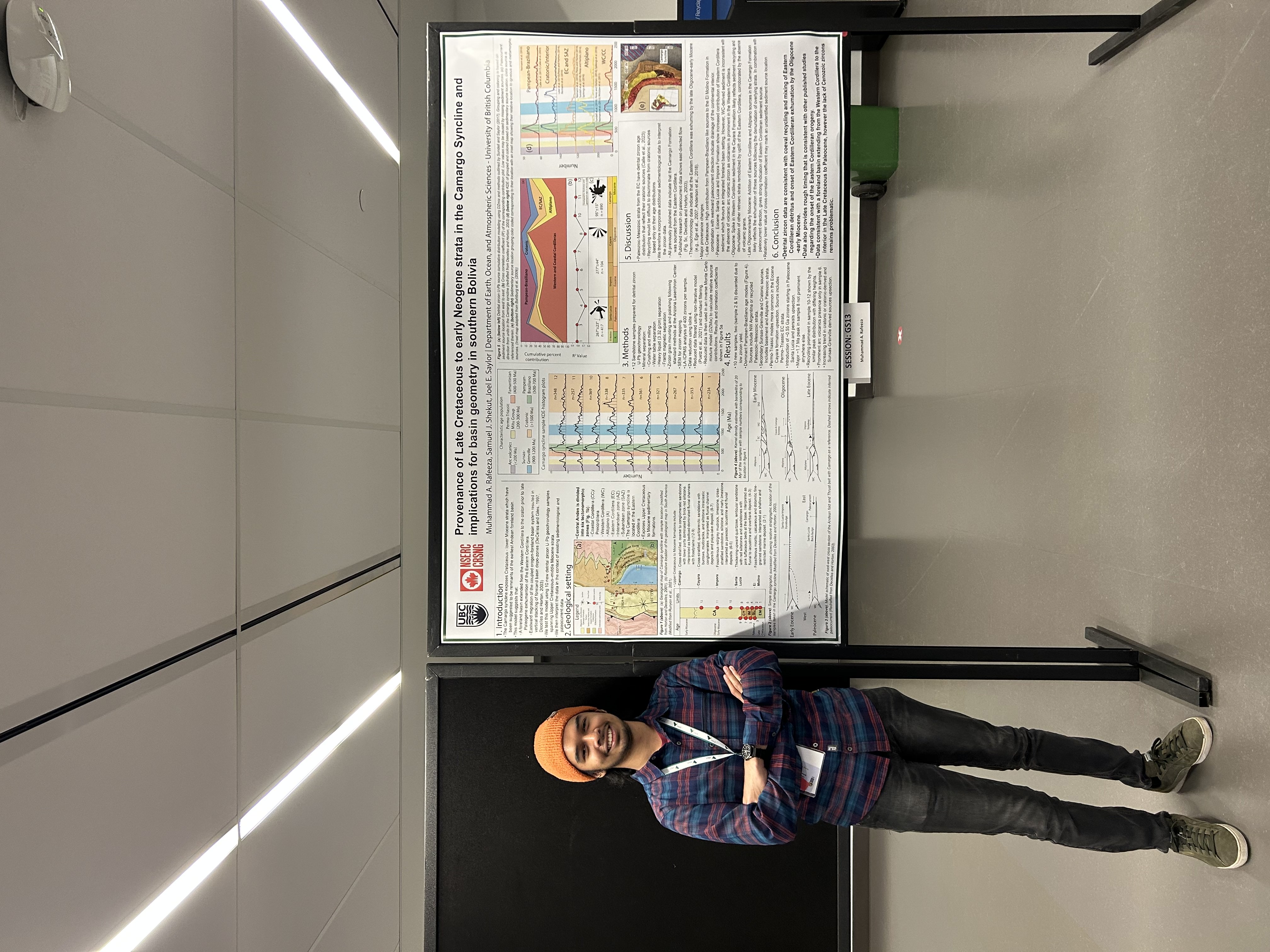Unraveling Earth's Secrets: EOAS Undergrads Present New Discoveries from Bolivian Andes and Vancouver Basin

Three EOAS undergraduate students attended the Joint Annual Meeting of the Geological Association of Canada, Mineralogical Association of Canada, and Society for Geology Applied to Mineral Deposits (GAC-MAC-SGA) in Sudbury, Ontario in the past week to present original research that they conducted with graduate students and faculty at UBC.
Helen Kopystecki's presentation, entitled, "Revisiting the paleoelevation history of the central Altiplano using stable isotopes in hydrated volcanic glass from the Corque Syncline, western Bolivia", builds on her 1.5-month field work in Bolivia in 2022. Her results call into question a long-standing paradigm that the Andes were rapidly uplifted in the late Miocene. They hypothesized that since major elevation changes are recorded by all paleoelevation proxies in the Corque stratigraphic section, carbonate- and volcanic glass-based proxies should yield the same reconstructed paleoelevations. However, their data indicated that volcanic glass and carbonate may record distinct environmental signals: reconstructed paleowater δD values from volcanic glass suggests that the central Altiplano has been at near modern elevations since at least 11 Ma, contrasting with δ18O values from carbonate rapidly decrease between 10 and 6 Ma. They suggested that more work is needed to understand influences on the isotopic composition of these two common paleoelevation proxies.

Helen Kopystecki
Julia Leandro's presentation entitled, "Reconstructing Maastrichtian–modern sediment delivery to the forearc Georgia Basin using detrital zircon U-Pb geochronology" includes the results of detrital zircon geochronology from the Huntingdon Formation in southern BC. Her results provide the first absolute ages for the Huntingdon Formation near urban Vancouver. Her data showed that Huntingdon Formation is Eocene in age and that major contraction of the eastern catchment of the Georgia Basin happened between the Late Cretaceous and the Eocene. Because of Huntingdon Formation’s lack of Proterozoic grains, neither the Maastrichtian Nanaimo Group nor the source of its Proterozoic grains are a sediment source for the forearc region into the Eocene. Their data also showed that the catchment of the forearc region in the Eocene did not reach past the Coast Plutonic Belt and that the catchment’s current trans-cordilleran extent was not reached until the Holocene.

Julia Leandro
Muhammad Rafeeza presented new detrital zircon geochronology from Bolivia in his poster entitled, "Provenance of Late Cretaceous to early Neogene strata in the Camargo Syncline and implications for basin geometry in southern Bolivia," which also builds on field work in South America. His results provide confirmatory data for the existing geodynamic model while at the same time calling into question source-to-sink (fluvial) relationships between the magmatic arc and the retroarc foreland. Their detrital zircon data is consistent with coeval recycling and mixing of Eastern Cordilleran detritus and onset of Eastern Cordilleran exhumation by the Oligocene-early Miocene. Their data also provides rough timing consistent with other published studies regarding the onset of the Eastern Cordilleran orogeny and is consistent with a foreland basin extending from the Western Cordillera to the interior in the Late Cretaceous to Paleocene.

Muhammad Rafeeza